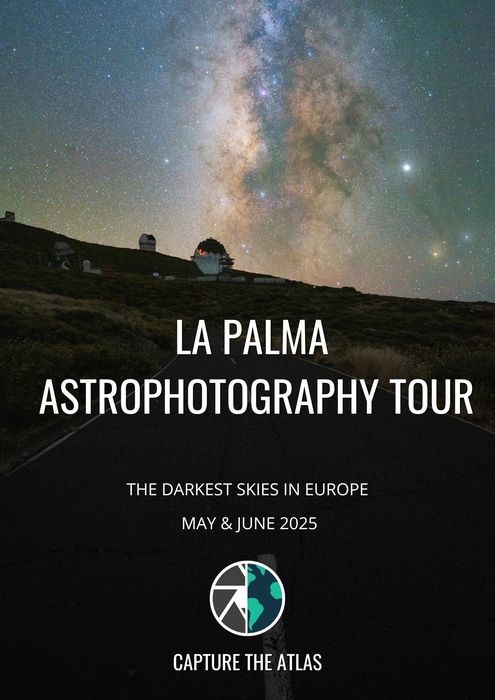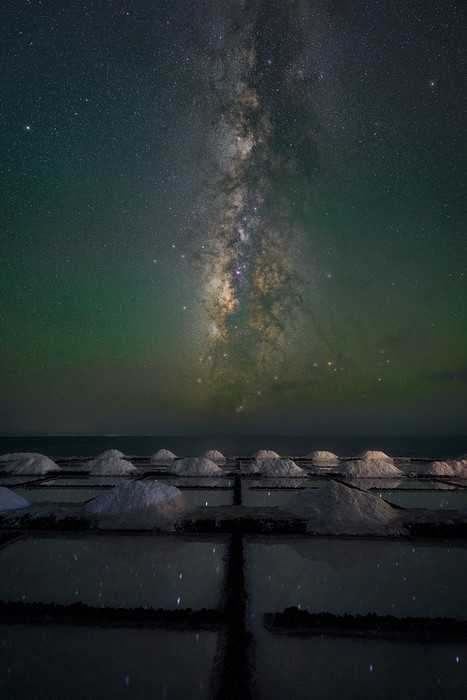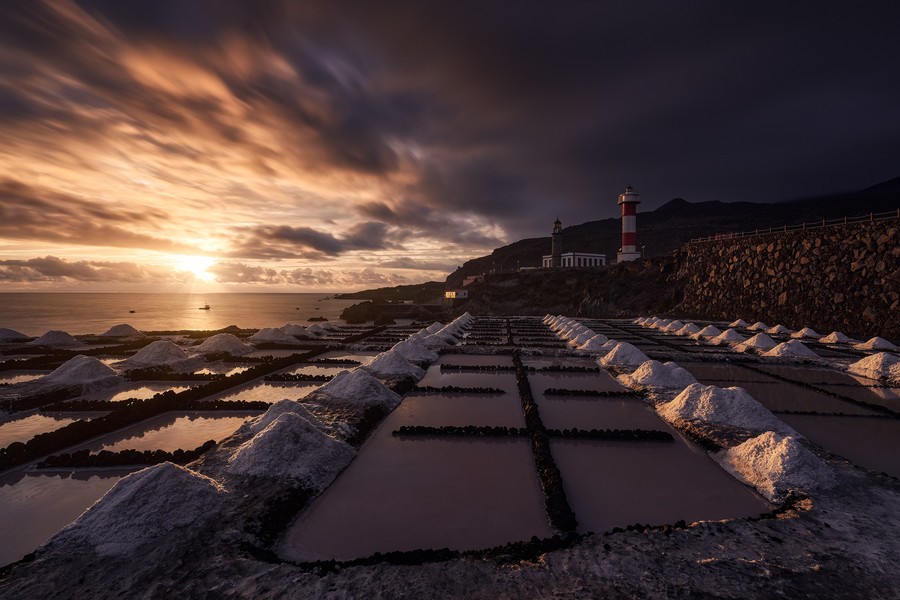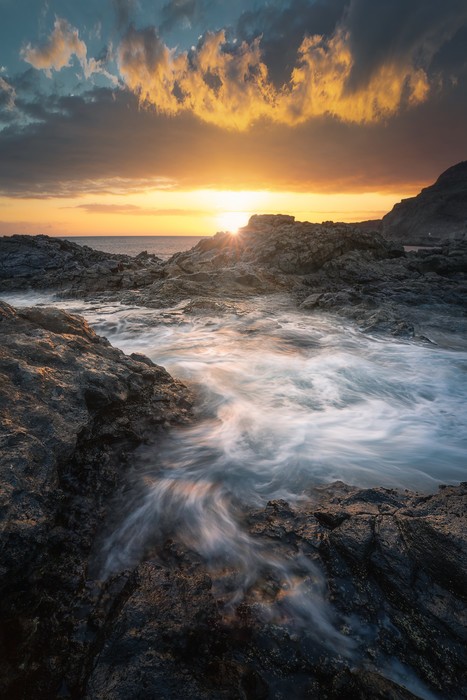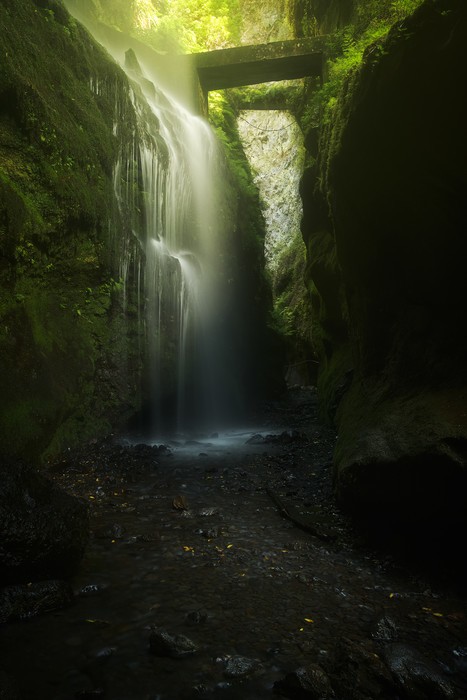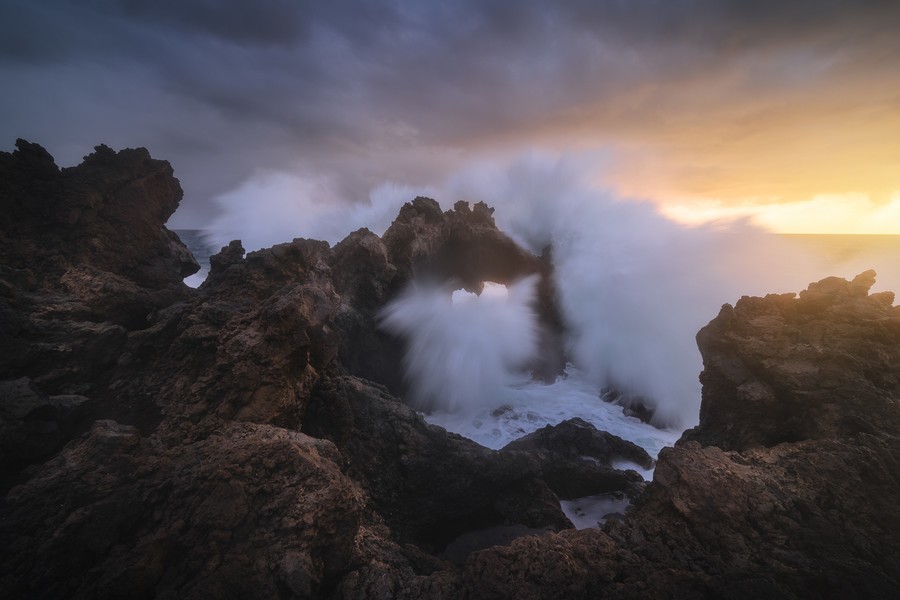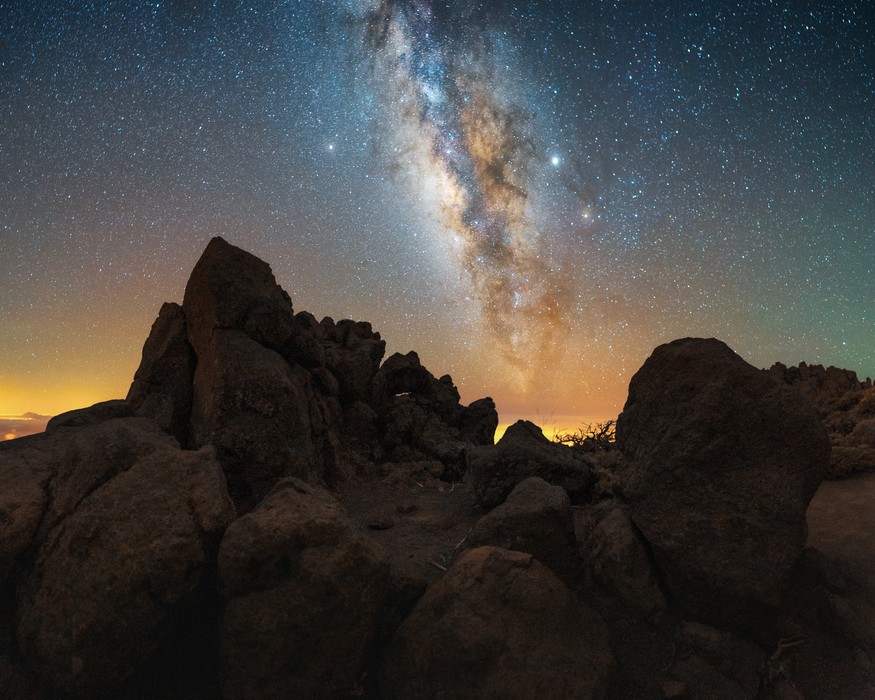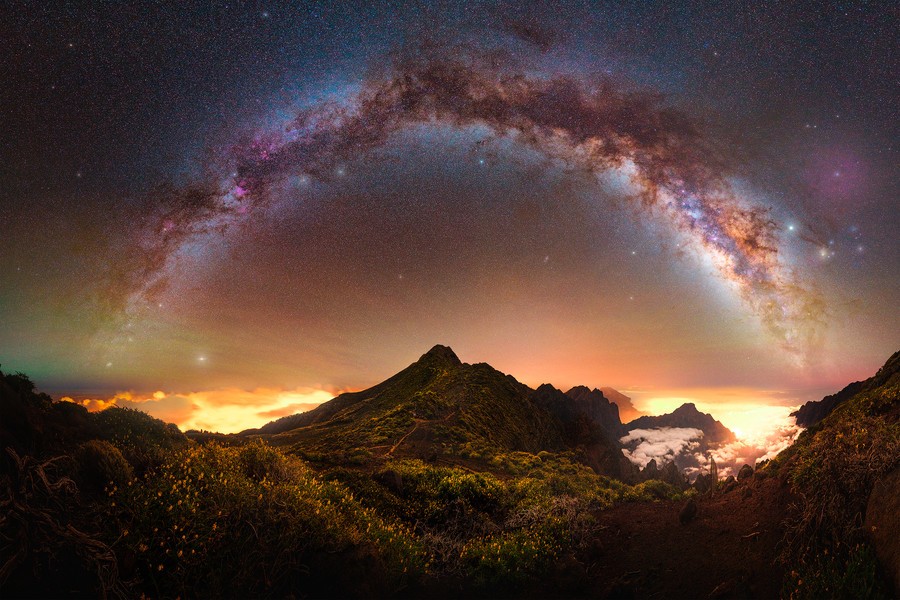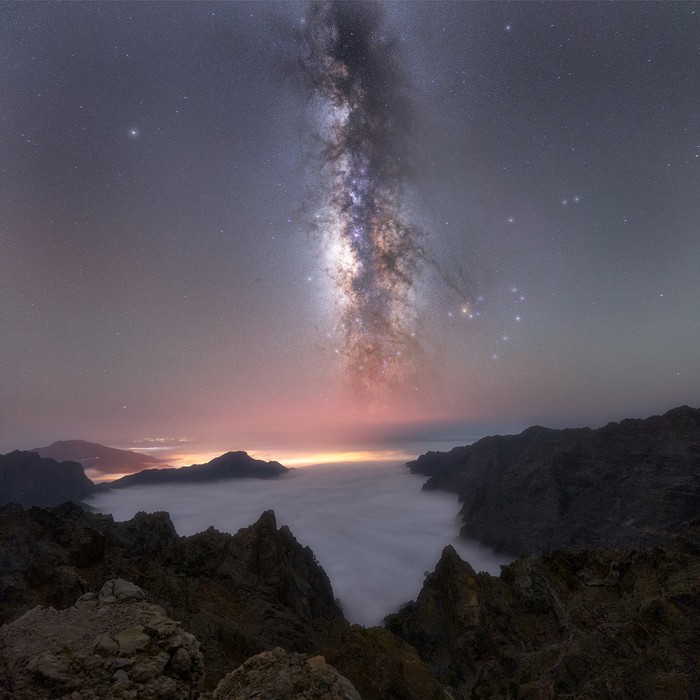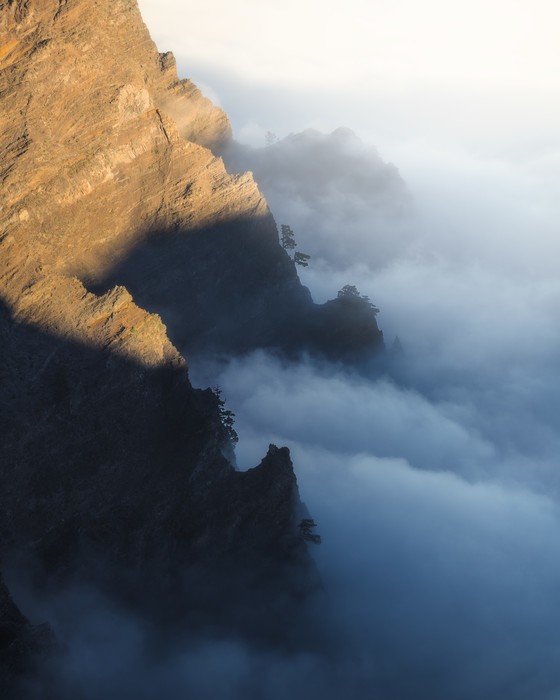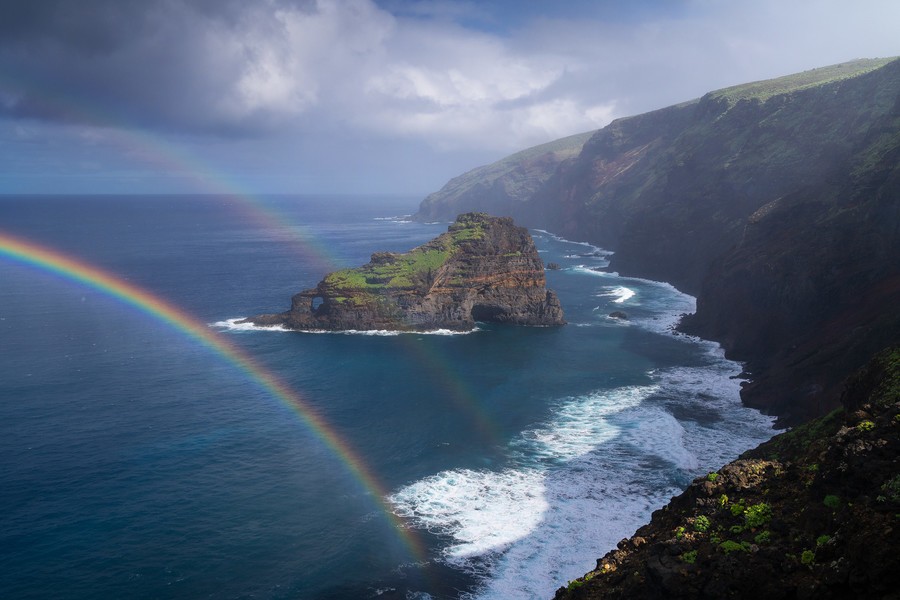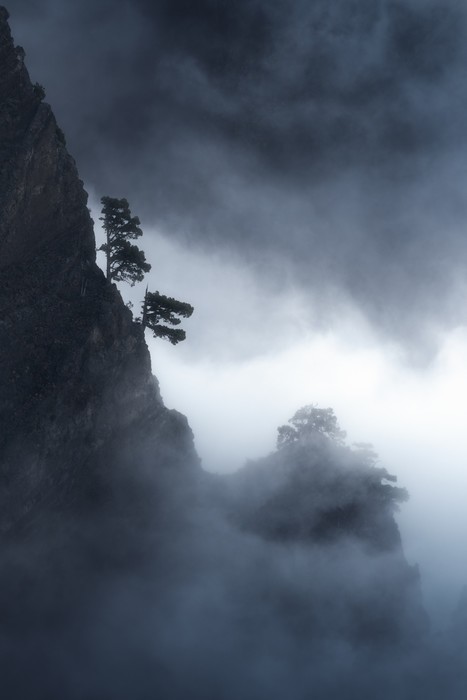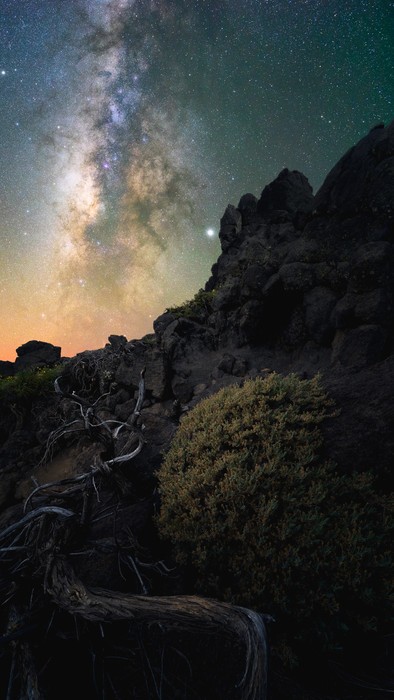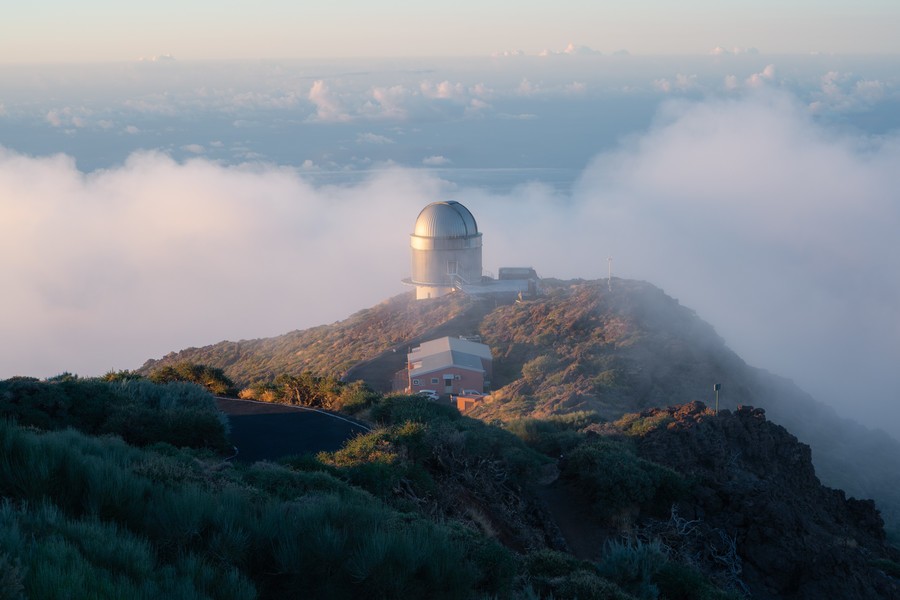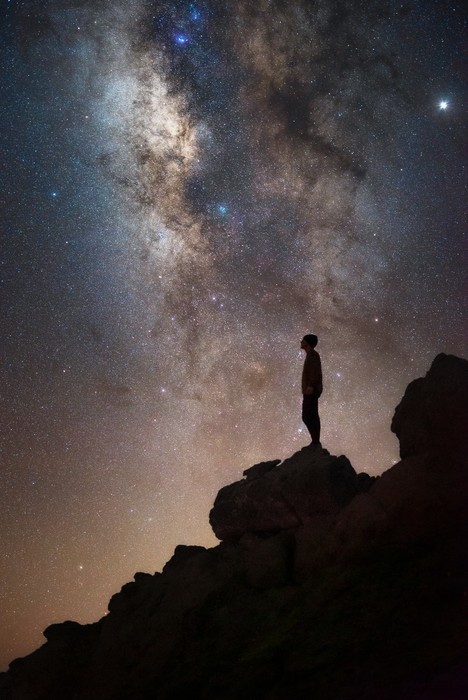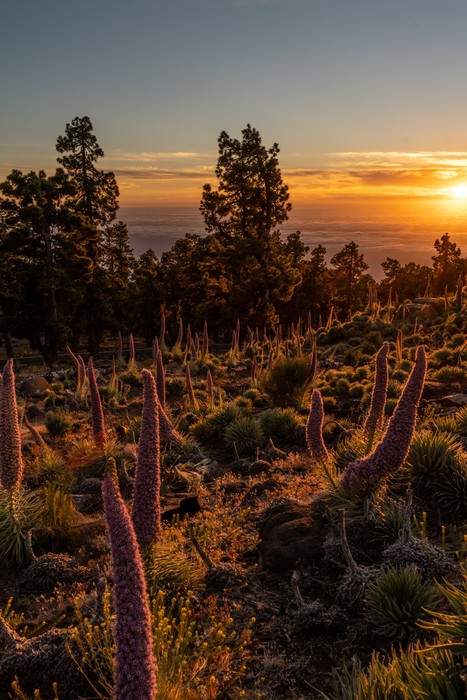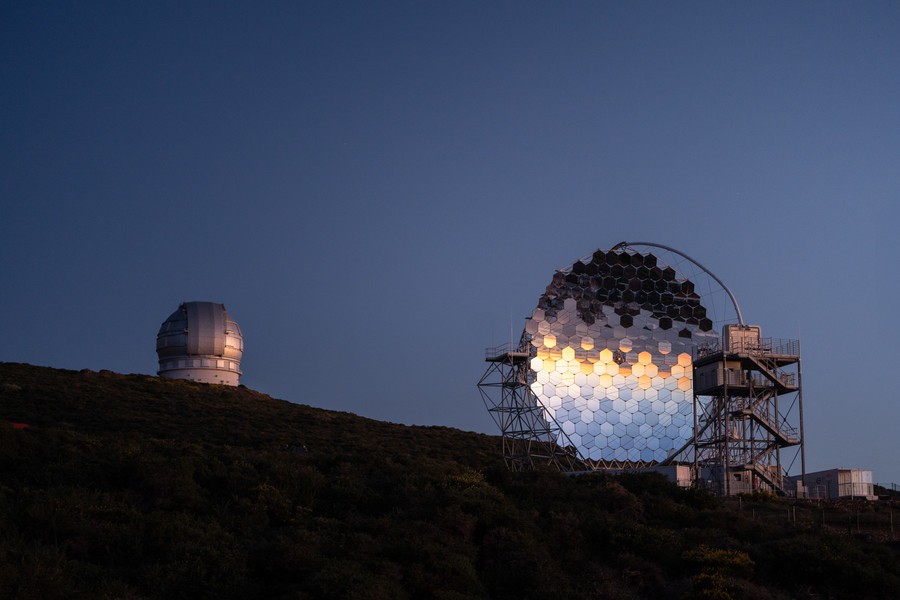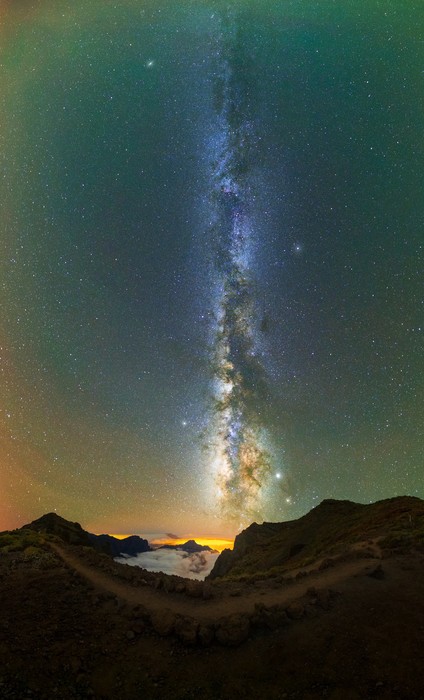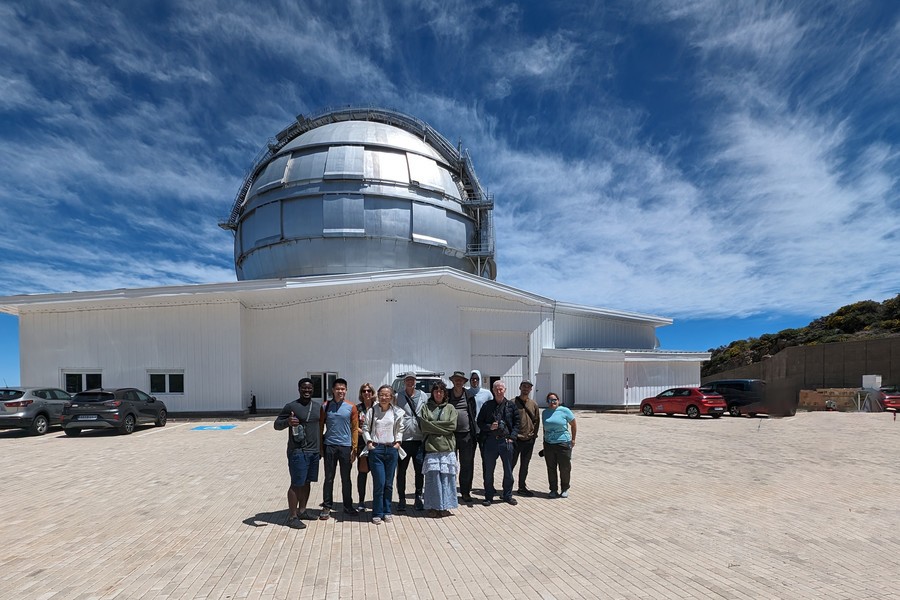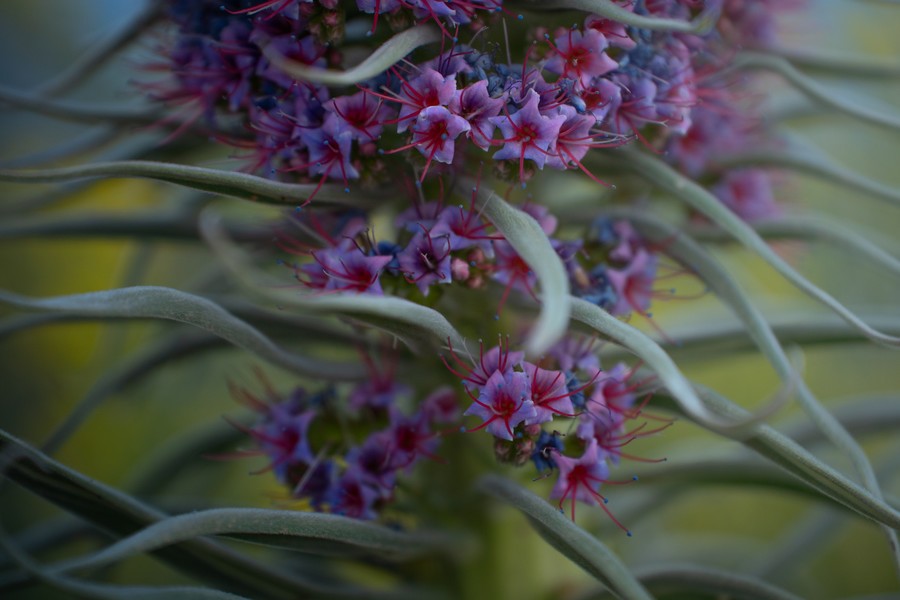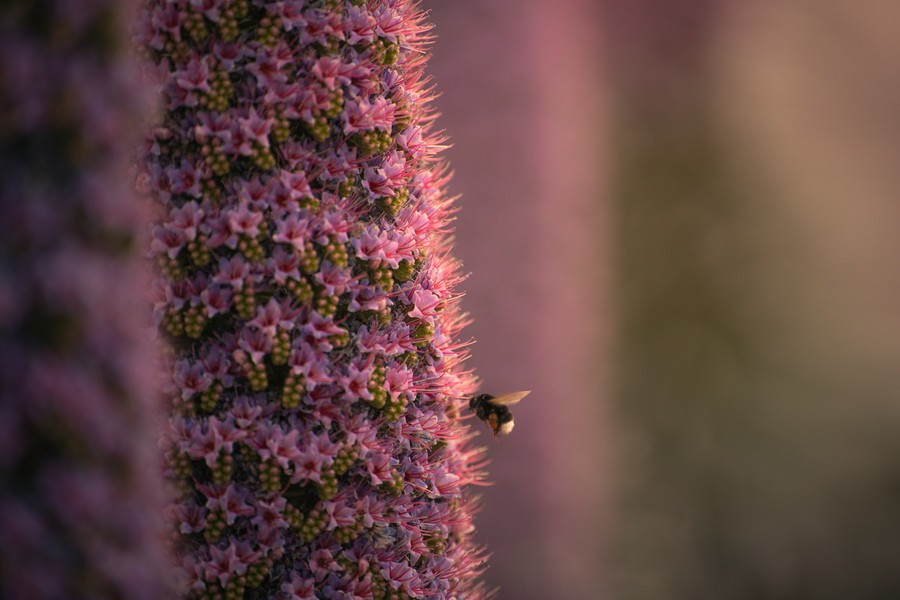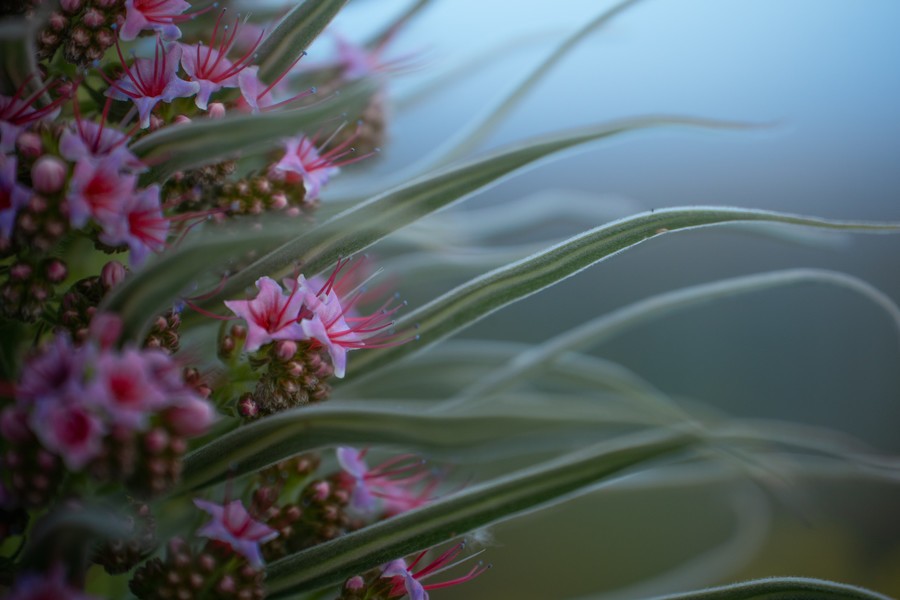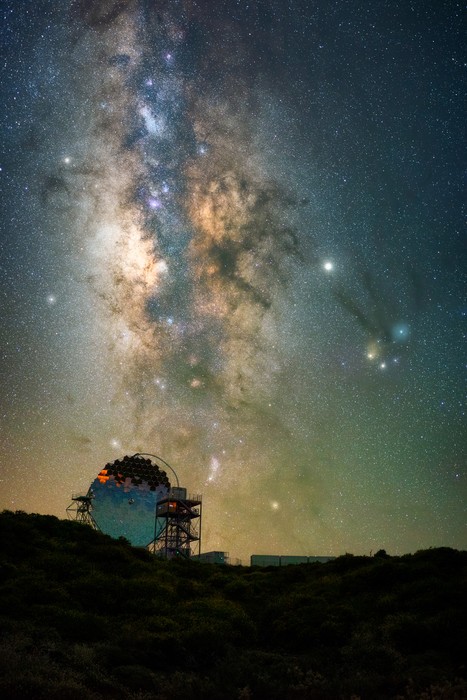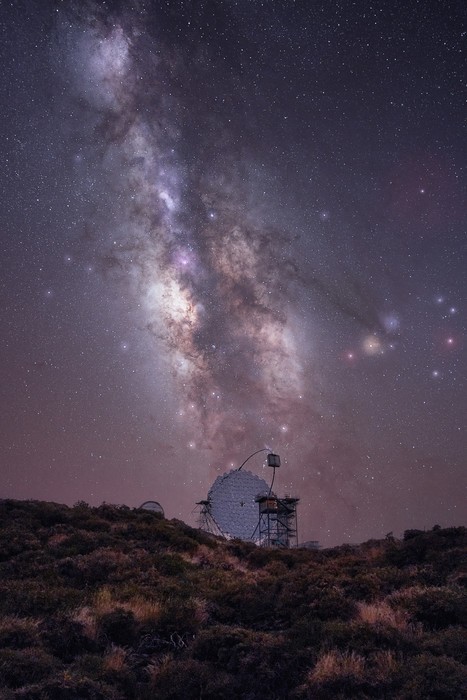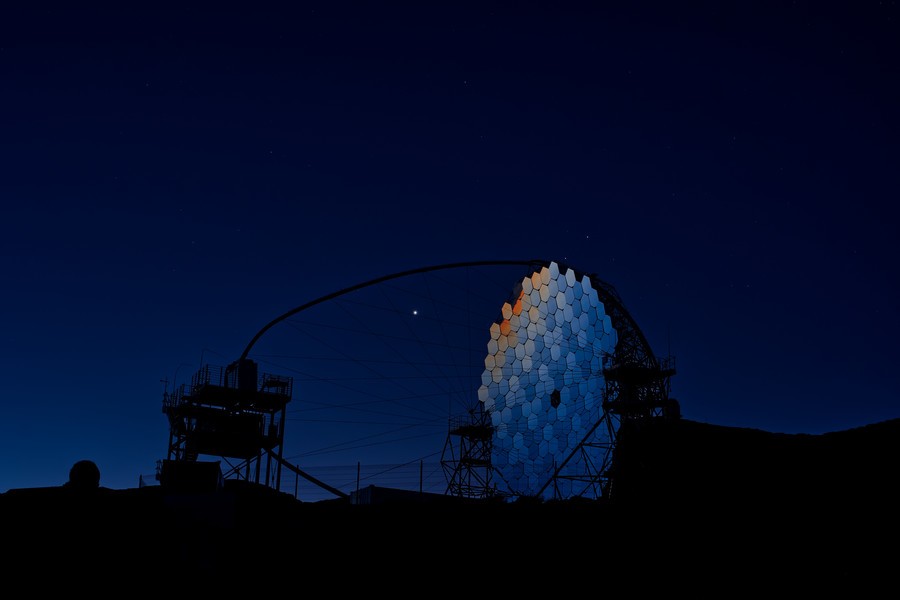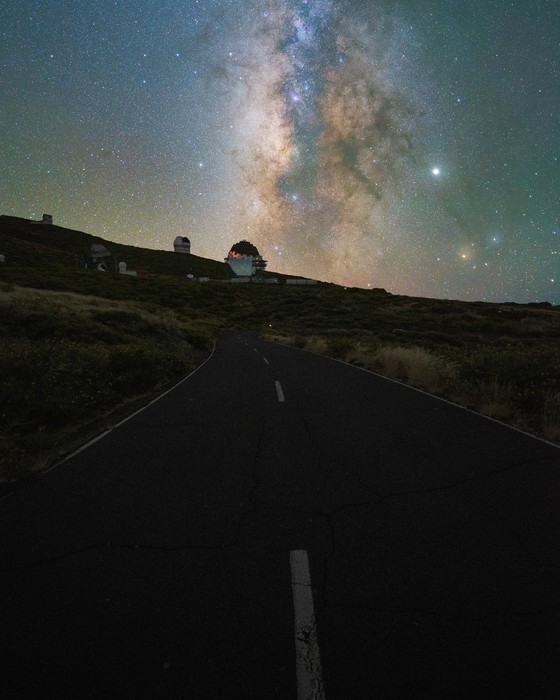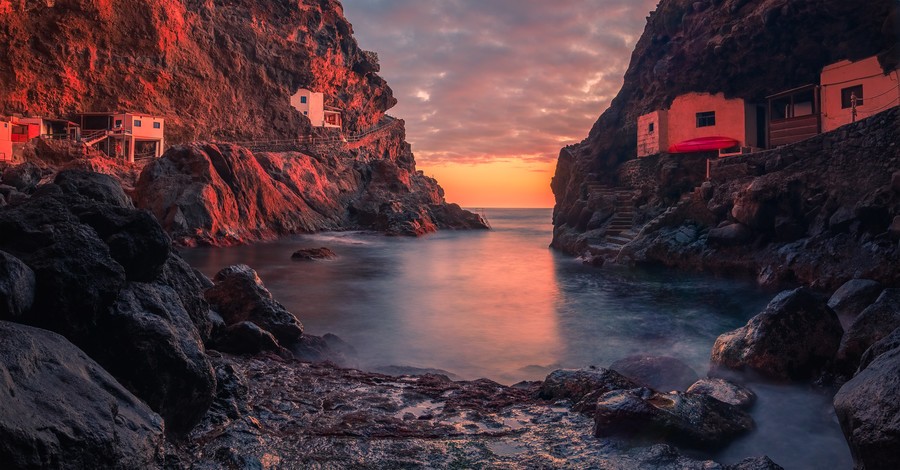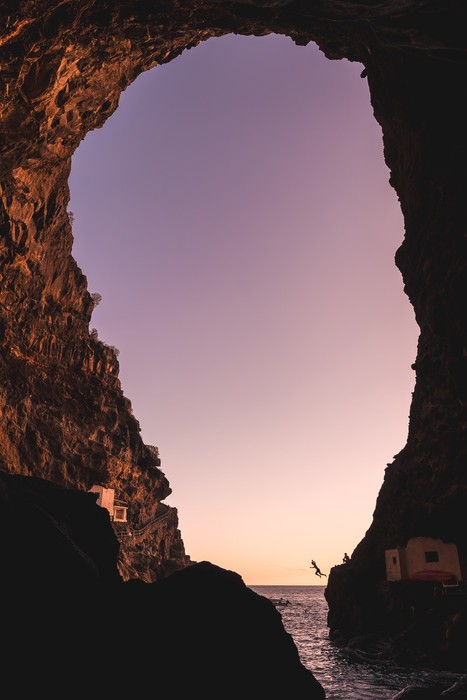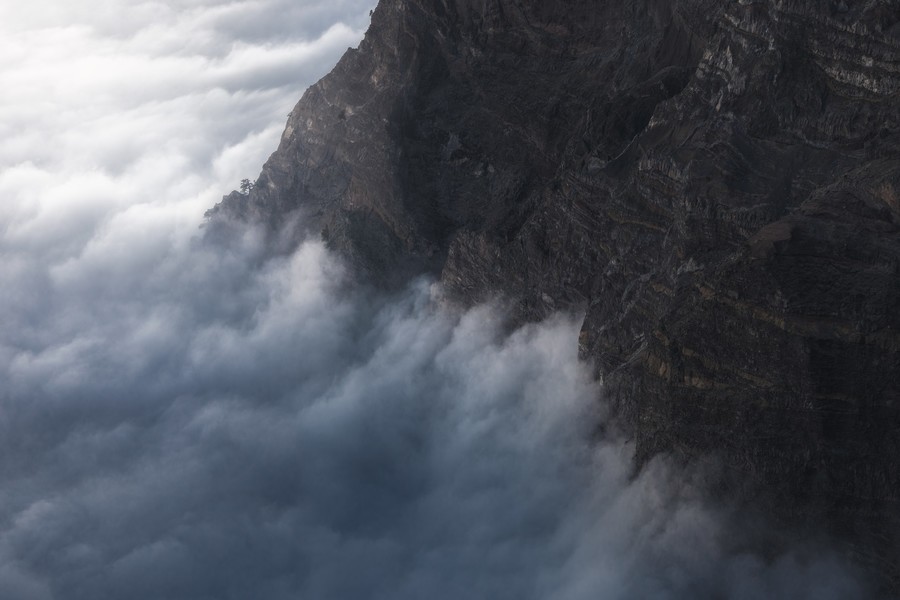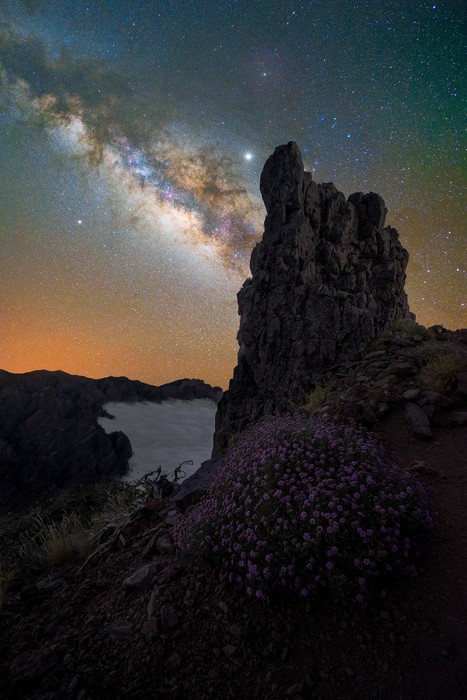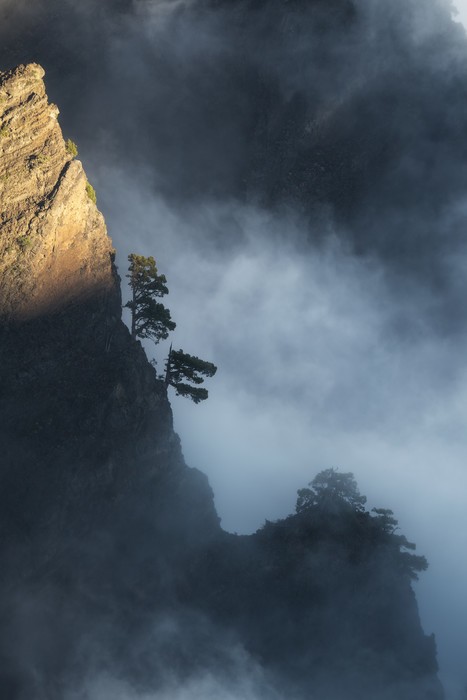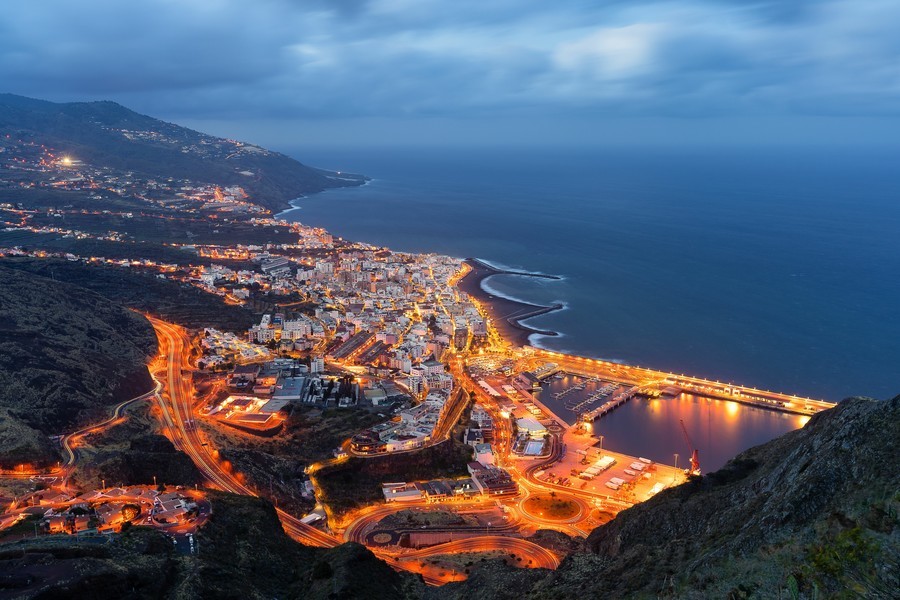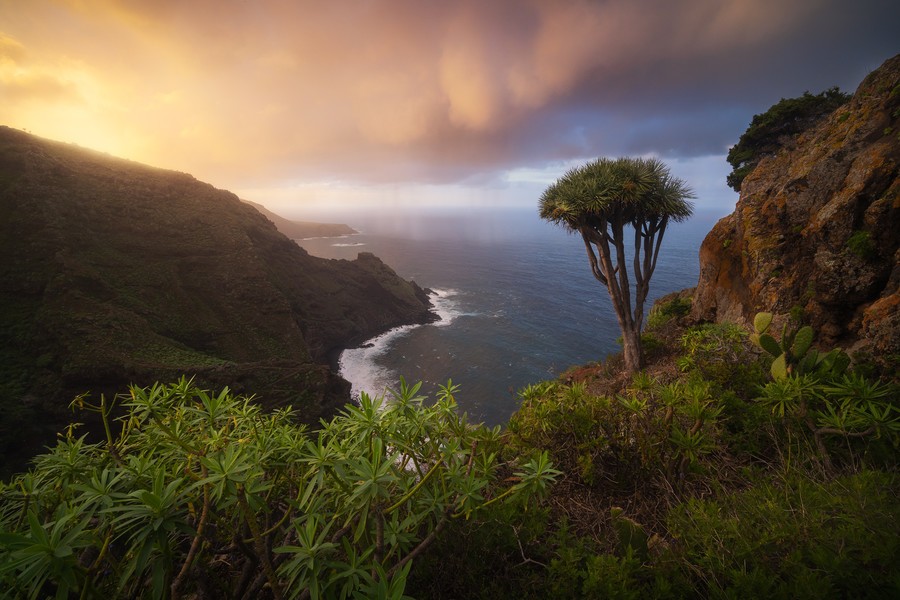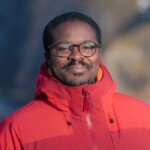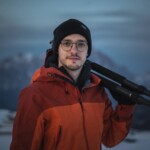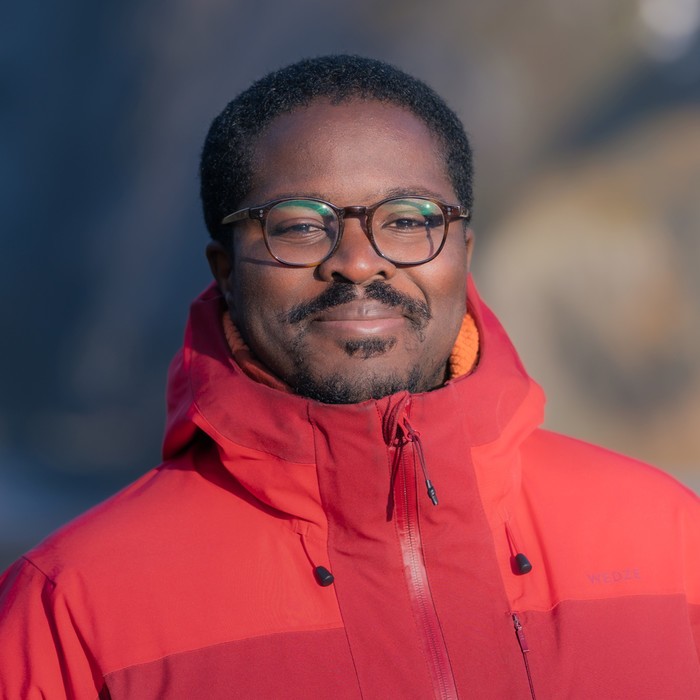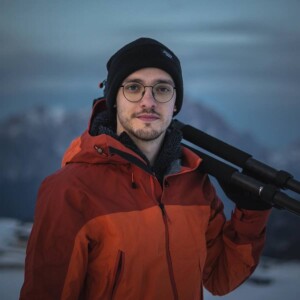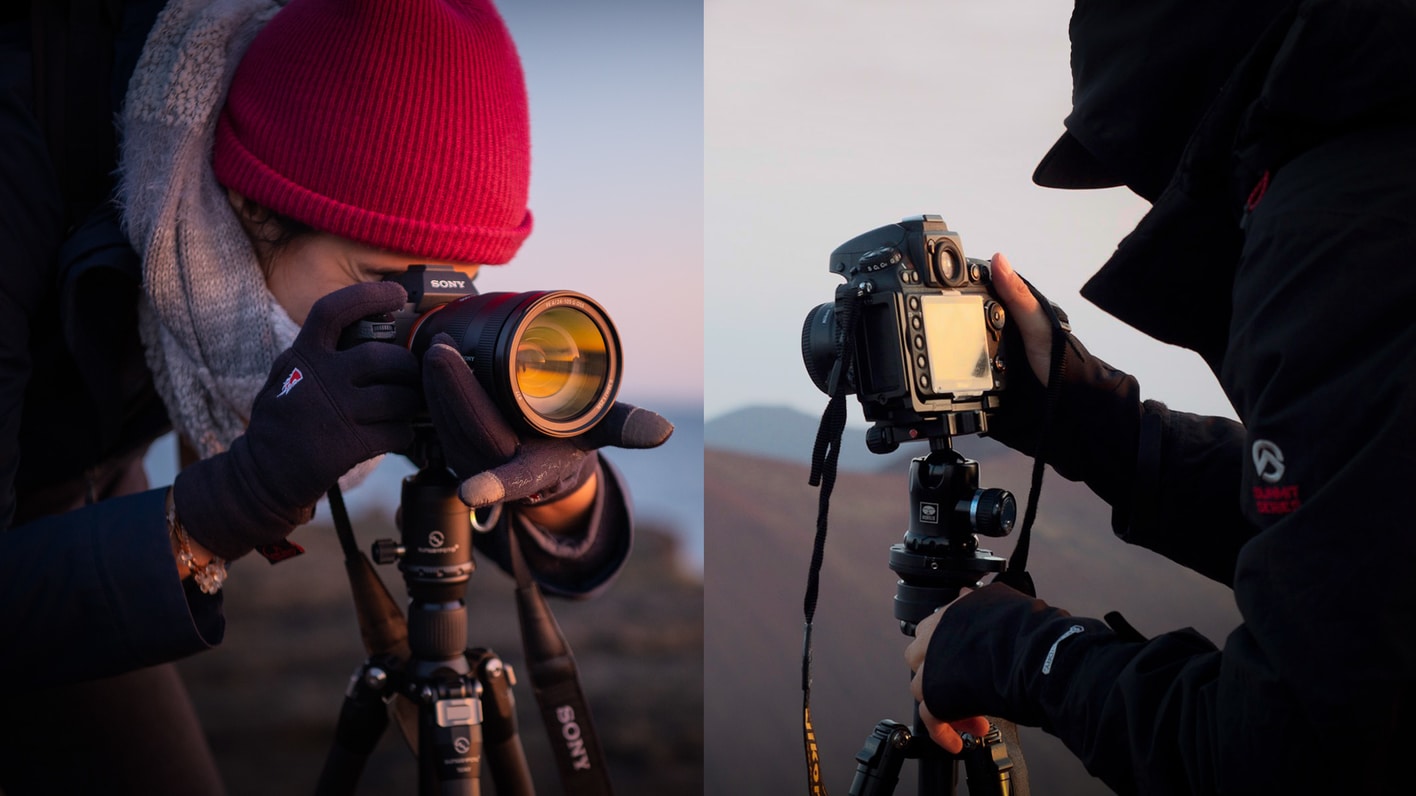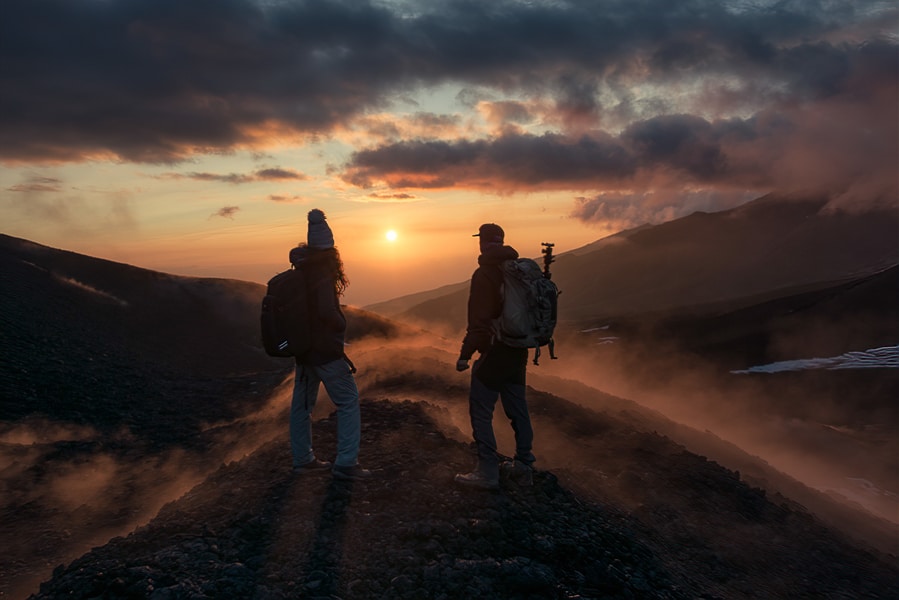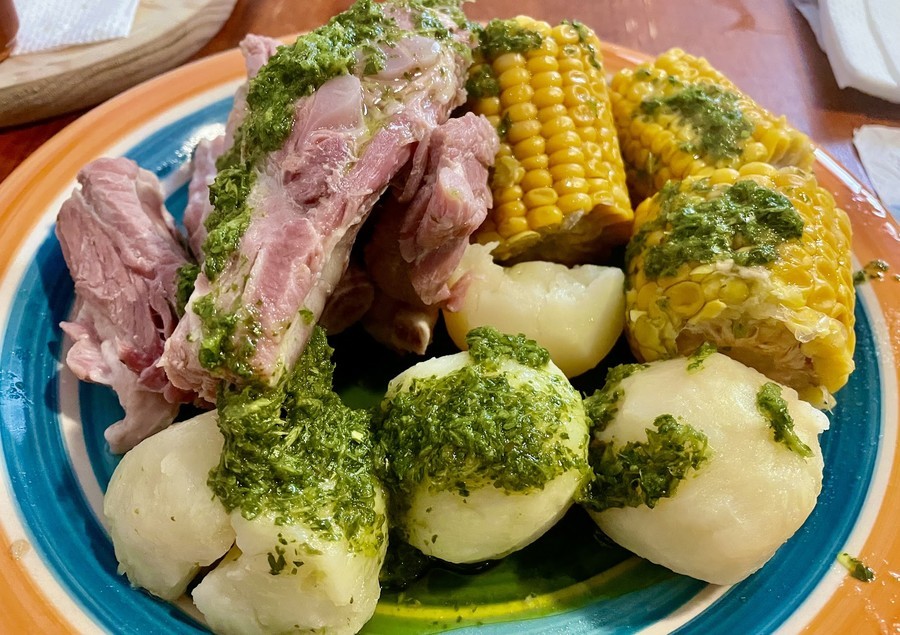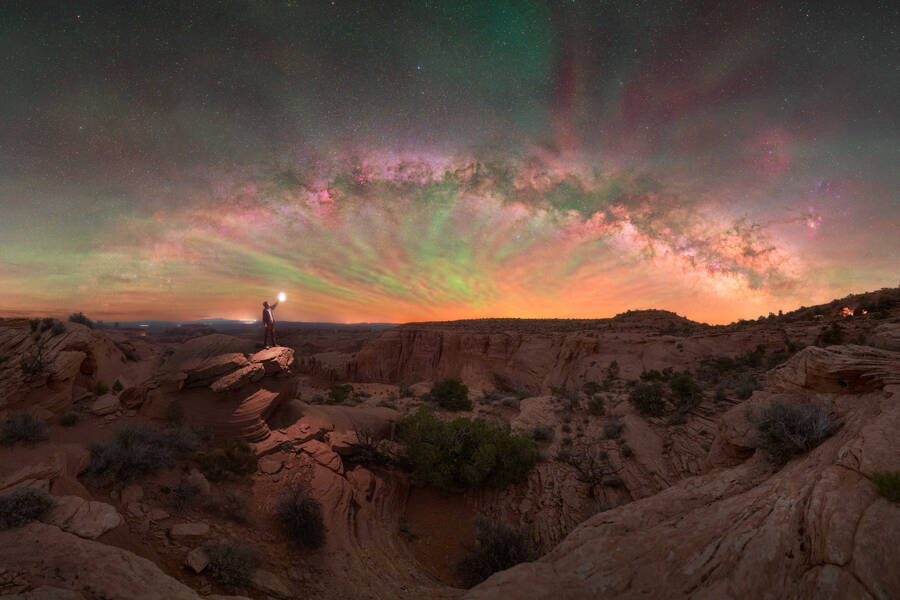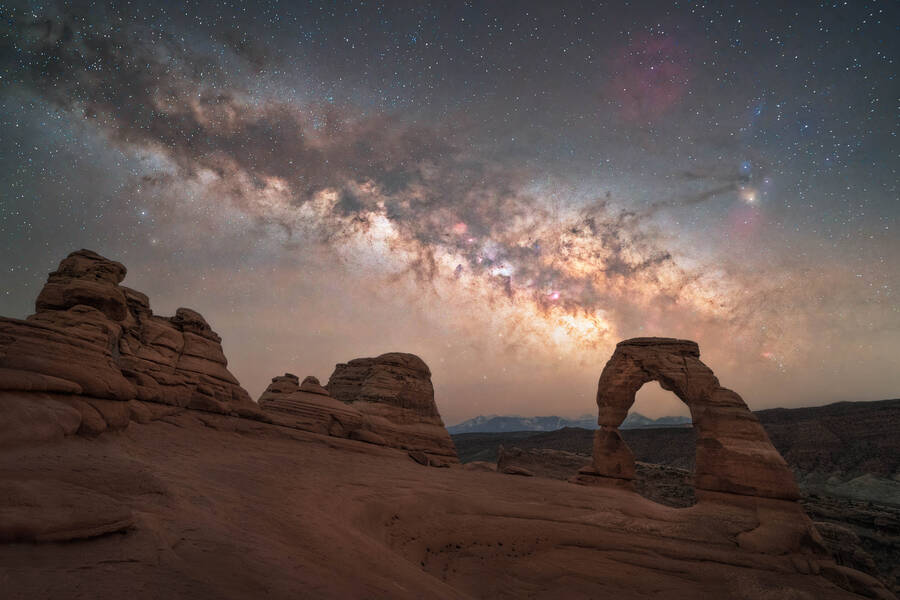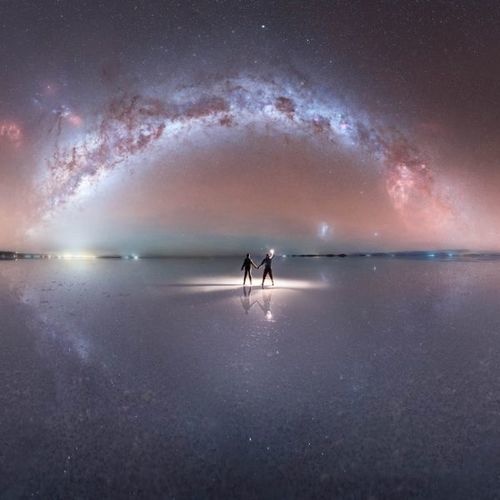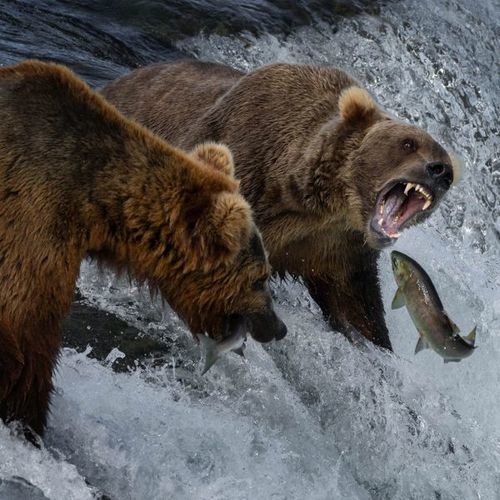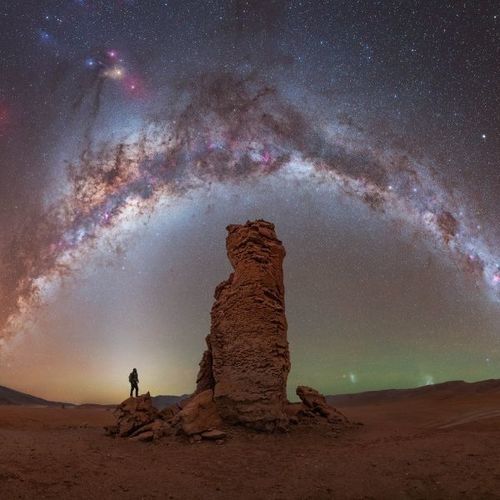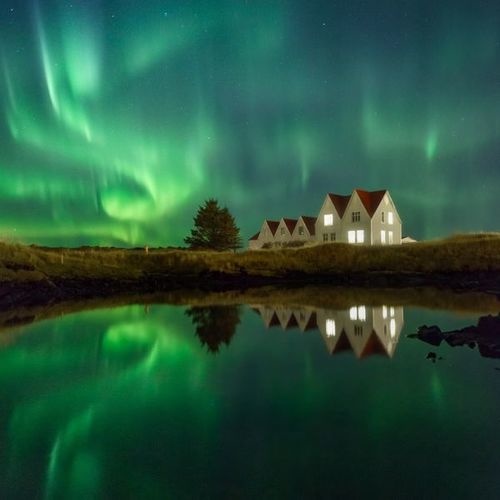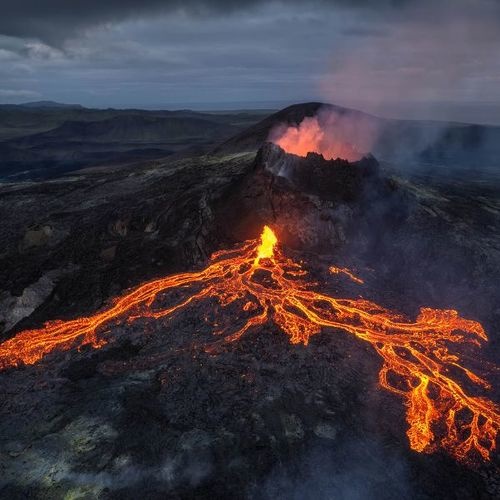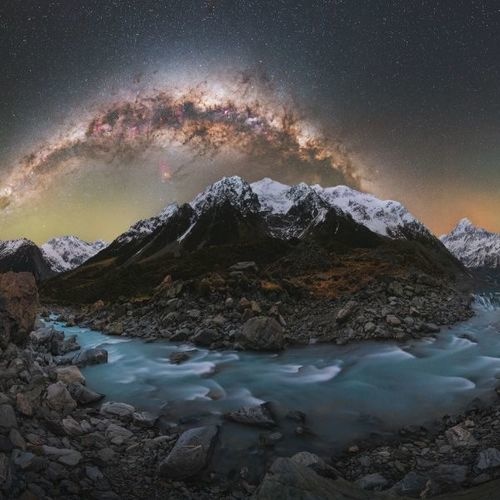2025 La Palma Astrophotography Tour
The Darkest Skies in Europe
Join us for a La Palma astrophotography tour where we’ll photograph some of Europe’s most impressive night skies over seascapes, volcanoes, lush vegetation and rugged peaks.
We are running this tour in May and June of 2025, during the best time of year to photograph the Milky Way on the Isla Bonita!
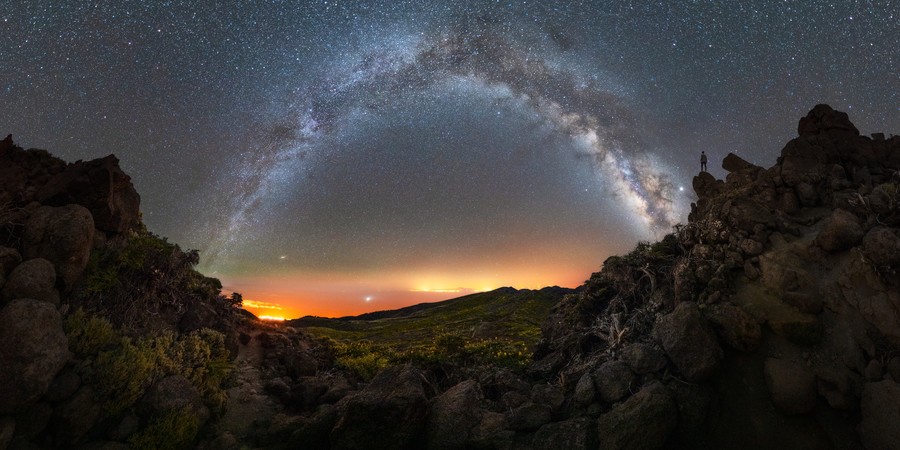
May 27 - June 3, 2025
June 18 - June 25, 2025
8 days and 7 nights
No long hikes required, but good fitness is recommended
12 participants
+
2 photography guides
(Single ocuppancy)
Couples sharing a room are eligible for a discount.
- Drop-off at La Palma Airport (SPC)
- Transportation during the trip in a private bus
- Fuel and parking fees
- Guided visit to GTC
- Accomodation in hotels in private rooms with private bathrooms
- Photography instruction from two professional photographers
- Photography editing lessons
- Access to the Capture the Atlas Academy (more info below)
- Flights to/from La Palma Airport
- Meals, except breakfast at the hotel
- Health/travel insurance
- Telephone, personal expenses, tips, etc. Any other service not mentioned in the "INCLUDED" section.
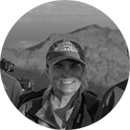

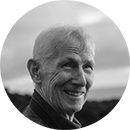
Photo Tour Overview
On this La Palma photo tour, we’ll focus on Milky Way and landscape photography over Europe’s darkest skies. La Palma is a Starlight Reserve and a UNESCO biosphere reserve, making it one of the best places in the world for stargazing and Milky Way photography.
During this La Palma photography workshop, we’ll dive right into the vast variety of landscapes on this beautiful island. We’ll watch the Milky Way rise above the sea of clouds in Roque de los Muchachos, stand on the edge of an ancient volcano in Pico de la Cruz, stargaze right next to massive telescopes used by space agencies around the world, also get the chance to visit the interior of one of these telescopes and learn about their research, and explore the dense laurisilva forests with their lush green trees and waterfalls.
We’ll personally help you capture the best possible images. We’ll show you the best techniques to shoot the Milky Way, from the basics to more advanced skills like using star-trackers, and we’ll do post-processing sessions so you can bring your images to life!
While this photo tour is primarily focused on astro shooting at night, we will also have time to capture sunrise, sunset, and daytime images, schedule and conditions permitting.
La Palma Astrophotograpy Tour Highlights
- Photo tour from May 19th – 26th & May 27th – June 3rd, 2025.
- Group size: 12 participants + 2 instructors.
- Main topics: Milky Way photography & Landscapes.
- Main areas: La Palma, Canary Islands, Spain.
- Best time of year to photograph the Milky Way in La Palma.
- Accommodation included in private rooms
- Guided tour to visit the Gran Telescopio de Canarias (GTC)
- Transportation included during the trip in a private bus.
- 6-night photography tour visiting breathtaking locations.
2025 La Palma Astrophotography Tour Itinerary
Our La Palma astrophotography tour itinerary can be flexible, and we’ll adjust the plan according to weather conditions. We’ll always keep you updated with any changes to the itinerary.
Our tour takes place during the best time of the year to capture the Milky Way arch over the volcanic landscapes of La Palma, when our galaxy is visible from around 11:00 PM to sunrise. If there are clear skies, we will spend as much time as possible shooting the night sky.
We will sleep in the morning, focus either on post-processing or scouting in the afternoon and evening, and shoot some fiery sunsets when conditions allow.
DAY 1: La Palma Astrophotography Tour
Our La Palma astrophotography tour begins at our hotel, where we’ll meet you and the rest of the group at noon for a quick meet and greet.
We’ll do our welcome speech and orientation, followed by a general night photography talk and an individual gear review to make sure that everything is ready for the first night session.
We’ll shoot our first sunset of this photo tour at Fuencaliente, where we’ll make good use of the time to also scout compositions for the night shoot.
Fuencaliente is the southernmost point in La Palma, and it’s famous for its Salinas (salt extraction facility) and the Fuencaliente Lighthouse. This is a perfect spot to spend our first sunset on this beautiful island. While we are here, we’ll also scout for compositions to shoot the Milky Way later in the night.
DAY 2: La Palma Astrophotography Tour
On the second day of our La Palma photography tour, we’ll wake up early to do a sunrise session at one of the most well-preserved secrets on the island. After parking our vans, and taking a short walk, we’ll be standing on lava stone, waiting for the sun to rise behind our main subject while enjoying the cool morning breeze.
After breakfast, we’ll head over to the depths of the laurel forest in Las Nieves National Park, where we’ll be surrounded by tall walls covered in trees, moss, and waterfalls. After a short hike, we’ll find ourselves standing under one of the tallest waterfalls in La Palma.
Laurel forests (also called laurisilva) are very typical in the Canary Islands, where the high humidity and stable, mild temperatures make it easy for the evergreen trees to thrive. Being in a laurel forest feels like being in a magical rainforest because of the humidity and dense foliage.
At the end of the day, we’ll visit Pico de la Cruz, which we’ll reach after about an hour’s drive. Pico de la Cruz is one of the most impressive locations in La Palma. It’s a small peak that stands tall over the whole island, giving an unparalleled view of Caldera de Taburiente National Park and the whole south side of the island. Here, we’ll be at a height of around 7,700 feet (2.350 meters), which is enough to be above the low clouds which usually sit around an altitude of 3,300 feet (1.000 meters). Seeing the sea of clouds move and form waves can be mesmerizing.
We’ll scout during sunset and then end the day shooting the Milky Way in this breathtaking location.

DAY 3: La Palma Astrophotography Tour
On the third day of our La Palma astrophotography tour, we’ll visit the Mirador de Santo Domingo de Garafía, located on the northwest end of La Palma. Here, we’ll be greeted by the cold breeze of the Atlantic Ocean and two beautiful sea stacks.
Finally, to end our day, we’ll drive up the mountain, this time to the highest point in La Palma: Roque de los Muchachos.
Roque de los Muchachos stands at the top of La Palma at an impressive altitude of 8,000 feet (2.426 meters). This, and the incredibly clear skies, have made Roque de los Muchachos the chosen spot for multiple deep-sky telescopes used by space agencies from all around the world.
We’ll scout different compositions around Roque de los Muchachos, trying to frame the Milky Way and the telescopes in our composition. We’ll go back to this location later during the night to photograph and enjoy the night sky.
DAY 4: La Palma Astrophotography Tour
On the next morning of our La Palma astrophotography tour, we’ll start the day with one of the biggest highlights of this trip: a guided tour to the Observatorio Roque de los Muchachos (ORM) from where we’ll be able to see both the GTC, MAGIC, and LST telescopes from up close. During this visit, and astrophysicist will guide us and explain more about these incredible telescopes and the work they do. To end this visit, we’ll be able to enter the Gran Telecopio Canario (GTC) and see the biggest optical telescope on Earth from the inside.
After the guided tour of the observatory, we’ll continue our day with an editing session. During this session, we’ll take the chance to edit some of the night photos we’ve taken during the trip. We’ll show you how to stitch your panoramas and how to extract all the detail from your Milky Way shots. The class will be recorded for you to rewatch in the Capture the Atlas Academy
In the afternoon, we’ll drive up to the Roque de los Muchachos area, to find fields of tajinastes for the sunset session. Tajinastes are beautiful and tall plants that can only be found in the Canary Islands. In La Palma, the blue tajinaste is an endemic species, making for stunning foregrounds for landscape and night photos. This is also the season when these gorgeous plants bloom, so we’ll try to look for flowering tajinastes for our compositions.
We’ll scout the area during sunset and blue hour to find the best tajinastes and framings for the Milky Way session later that night.
DAY 5: La Palma Astrophotography Tour
On the fifth day of the La Palma photo tour, we’ll drive to a nearby location for our morning photography session.
We’ll visit Mirador de la Cumbrecita, one of the most spectacular viewpoints in La Palma. Here, we’ll see the Caldera de Taburiente National Park from a vantage point and the tall volcanic walls surrounding the park. We can even get a glimpse of the night location.
For the night shoot, we’ll drive up to the top of La Palma again. This time, we’ll use the MAGIC telescopes as a foreground for our Milky Way images. The MAGIC telescopes are a beautiful array of mirrors that, captured from the right angle, can mirror the stars in the sky.
DAY 6: La Palma Astrophotography Tour
Continuing with our La Palma photo tour, on the next morning we’ll drive to one of the most unique places in the Canary Islands: Porís de Candelaria.
Porís de Candelaria is an old fishing town embedded inside a cliffside cave in the Northwestern region of La Palma. In this dreamlike village, we’ll see the white houses that were once inhabited by fishermen and take in the breathtaking view of the cave opening, which serves as a natural harbor. The opening of this cave resembles the shape of the island.
Our next stop to enjoy the sunset will be Mirador de los Andenes, where we’ll drive after dinner. This viewpoint is close to the Roque de los Muchachos area, and there, we’ll enjoy the sea of clouds while scouting for compositions to photograph the Milky Way at night.
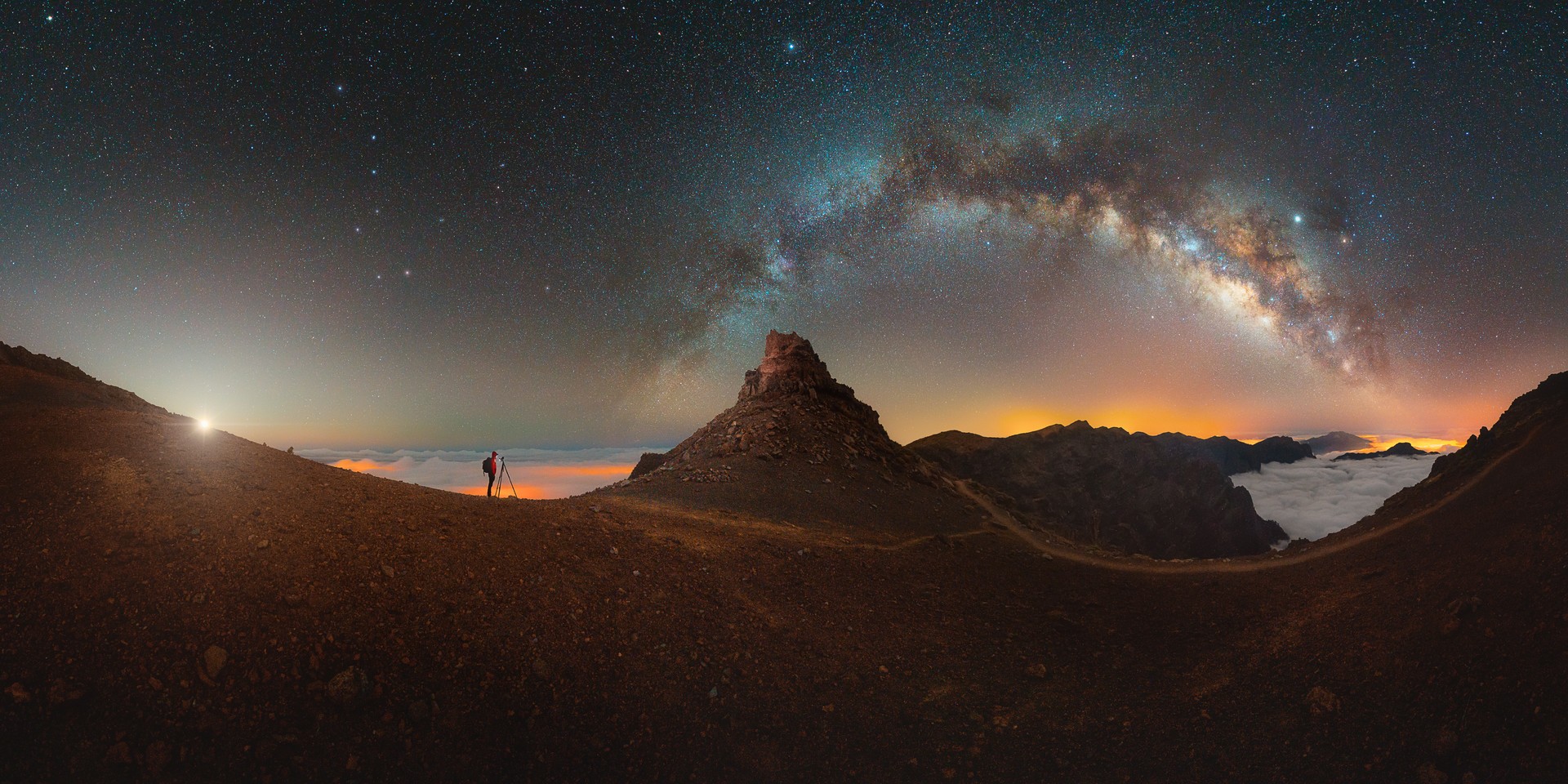
DAY 7: La Palma Astrophotography Tour
On the next morning of our La Palma photo tour, we’ll enjoy one last editing session in the morning. During this session, we’ll reinforce the concepts we’ve learned in the previous class and your tour guides will provide you with more tips and tricks on how to get the most out of your Milky Way images.
In the afternoon, after lunch, we’ll head to the top of La Palma one last time to another stunning location called Pared de Roberto. We’ll scout the area before nightfall to find the best compositions.
This will be the last Milky Way session of our La Palma astrophotography tour and the perfect farewell to Europe’s darkest skies!
DAYS 8: La Palma Astrophotography Tour
On the last morning of this La Palma astrophotography tour, we’ll check out of our hotel and do a final stop at Mirador de la Concepción. Here, we’ll see the town of Santa Cruz de la Palma from an impressive vantage point.
After that, we’ll drive you to the airport and we’ll say our farewells to Isla Bonita.
Price: $3,990 USD
Deposit: $1,500 USD
A $1,500 deposit is required to reserve your spot for this photo tour. You can also pay in full at any time. The remaining balance is due 120 days before the start date of the tour. If the remaining balance is not paid in full by the due date, you will lose your spot.
What does the price include?
Included
-
- Accommodation in private rooms. (Discount of $600 for couples sharing rooms – $300 each).
- 8 days of photo guide services from professional photographers Prince Berkoh and Francesco Dall’Olmo.
- Instruction in a small group of 12 participants with a 6:1 ratio (6 students per instructor).
- Guided visit to the Observatorio Roque de los Muchachos with a visit to the interior of the GTC.
- Night photography sessions throughout the entire photo tour, including star-tracking instruction.
- Editing & post-processing sessions during the photo tour.
- Transportation during the photo tour.
*Bonuses
-
- Access to Dan Zafra’s full Capture the Milky Way Course (valued at $299).
- Access to David Aguilar’s full Moody landscapes editing tutorials (Valued at $109).
- Access to the editing lessons recorded during the trip and past La Palma Photo Tour alumni editing lessons.
Not included
-
- Flights to/from Aeropuerto de la Palma.
- Meals.
- Health/travel insurance (We can help you purchase the best travel insurance according to your needs).
- Telephone, personal expenses, tips, etc., and any other service not mentioned in the “INCLUDED” section.
Upcoming La Palma Photo Tour dates



What will I learn during this La Palma Photo Tour?
What you learn during the photo tour will vary according to your goals and skills. Your instructors are professional photographers with extensive experience who will help you take your photography to the next level:
Basic Photography Techniques
- Getting comfortable shooting different types of landscapes and photos in manual mode
- Adjusting to the best camera settings in each situation
- Familiarizing yourself with the basics of night and Milky Way photography
- Enhancing your compositions with the best techniques
- Designing your own shooting workflow to be more effective in the field
- Photographing daytime and night panoramas
Advanced Photography Techniques
- Creating powerful compositions that tell a story and engage the viewer.
- Building a connection between your photography and your vision.
- Becoming a master of light: learn how to enhance it and keep it under control.
- Advanced night & Milky Way photography techniques like stacking and Panoramas.
- Advanced bracketing and exposure blending to capture the best dynamic range.
- Using wide-angle distortion and focal length blending to create powerful images.
- Focus stacking to capture tack-sharp images with interesting foregrounds.
Post-processing Techniques
Some of the post-processing techniques that you can learn with our included tutorials are:
- How to start using Lightroom and Photoshop (all the basics).
- Preparing your images in Lightroom/Adobe Camera Raw to start on the right foot.
- Stitching panoramas using different software like Lightroom, Photoshop, or PTGui Pro.
- Stacking night images using Starry Landscape Stacker or Sequator.
- Reducing the noise in your night images using Topaz Denoise AI.
- All types of Blendings (exposure, focal length, focus, etc.).
- Light shaping and Dodge & Burnin your landscape images.
- Advanced Milky Way techniques like star reduction, structure, natural colors, etc.
Your instructors on this La Palma tour
Prince Berkoh will be the tour leader and he’ll make sure that you capture the best possible images during this trip.
Prince is a landscape and night photographer based in the North of Spain, with extensive experience both as a photographer and photo tour leader. His passion for photography has taken him to some of the most spectacular landscapes in the world, and he is a real expert on Spain, including La Palma.
He loves teaching others about photography, having led numerous tours in multiple destinations and given presentations on night photography over the years. He also leads other photo tours in Europe and South America, to such locations as Patagonia, Iceland, the Dolomites, the Faroe Islands, etc.
Prince will show you how to best capture the landscapes of La Palma, from the basics to advanced techniques like star-tracking, stacking, star reduction, focus stacking, panoramas, and other landscape and night photography tips.
Francesco Dall’Olmo will be the co-leader on this La Palma astrophotography tour, and he’ll assist you with all your photography needs.
Francesco is a landscape and night photographer. Additionally, he is a professional time-lapse photographer. He’s been honing his photography skills over the years in his backyard: the Italian Dolomites, which he knows like no other. He is also an expert in La Palma, where he has photographed the best spots both during the day and especially at night.
He has traveled all over the world to photograph the night skies, capturing breathtaking images in Atacama, Patagonia, and all over Europe. He has also helped multiple photographers improve their skills in various photography workshops.
With Francesco, you’ll learn everything you need to take your night photography to the next level!
What to bring on this La Palma Photo Tour
We will send you a complete list of everything we recommend bringing on this tour before the trip. Below is a summary of things you might need:
Photography gear
-
- A mirrorless or DSLR camera.
- A sturdy tripod and a remote shutter.
- A wide-angle lens, such as 14-24 mm.
- A medium zoom lens, such as 24-70 mm.
- A telephoto lens, like a 70-200 mm lens.
- A camera bag to transport all your equipment.
- A headlamp for the night shoots.
- Glow-in-the-dark tape for your tripod.
You may be interested in this guide, where you can dive deeper into photography equipment for traveling.
Some optional items, if you are focused on advanced MW photography, are:
-
- A star-tracker.
- An astro-modified camera.
*While zoom lenses are acceptable for this workshop, prime lenses are recommended for Milky Way photography. Some of the best lenses in this range are:
-
- 20 mm f/1.8
- 24 mm f/1.4
- 28 mm f/1.4
- 35 mm f/1.8
- 40 mm f/1.4
- 50 mm f/1.8
You can get them either from your camera brand or from third-party manufacturers like Rokinon or Sigma.
*This astrophotography workshop focuses on Milky Way nightscapes and not on deep-sky imaging. However, you can bring a telephoto/telescope and take your own deep-sky photos if you like.
You can find more information in our list of best lenses for the Milky Way and best cameras for astrophotography.
Clothing
Temperatures are mild and pleasant in the Canary Islands, so there won’t be extreme heat conditions.
However, during this photo tour, we will experience many drastically different environments. We’ll go from sea level to the highest point on the island in a matter of a couple of hours. We also have to consider that temperatures can drop at night, especially at higher altitudes.
For this reason, we recommend bringing the following clothing:
- A system of layers to wear during the day and night (base layer, insulation layer, windproof layer, and a hard-shell layer).
- A good pair of breathable boots (to protect your feet and ankles while walking on harsh terrains like volcanic rocks or gravel).
- Thermal pants, gloves, hat, and a neck gaiter/scarf for the night photography sessions.
Some optional items that are highly recommended are:
- Hiking poles to help with balance on uneven terrain.
- A cap or sun hat.
- Sunglasses.
- Lip balm.
- An external power bank.
You will find more items and details on the official list of recommendations that we provide upon registration.
Money
The currency in Spain is the Euro. We highly recommend getting euros in your home country, although, if that is not possible, you can always purchase some at the airport in Santa Cruz. Credit and debit cards are accepted in most places in La Palma, but there are still many businesses that only take cash, especially when it comes to small amounts.
Documentation
As part of Spain, La Palma follows the visa regulations of the Schengen Area. Depending on your nationality and duration of stay, a visa may be necessary. We are here to assist you with the visa application process and provide guidance. It’s essential to verify the specific visa requirements for your country of residence prior to your trip.
Starting in the first half of 2025, visitors from most countries will need to apply for a travel authorization called ETIAS to enter the EU. This document is a new requirement and will apply even to some countries that didn’t need any kind of visa or authorization previously, such as the US or Canada. We urge you to check the official ETIAS website to find more information and verify if you need to apply for one.
Additional information about this La Palma photo tour
Accommodations
During this La Palma photo tour, we will stay in a hotel in Los Cancajos, close to La Palma’s capital, Santa Cruz de la Palma, in private rooms with private bathrooms. This hotel is close to most of the photography locations on this trip, and its location will give us the flexibility to move around the island according to the weather patterns. Additionally, we’re just a quick drive away from Santa Cruz de la Palma where we can go for lunch sometime and also to get souvenirs.
The standard room included is a private room with private bathroon. We also offer a tour discount of $600 for couples sharing a room – $300 each).
All rooms include seaview so you can relax and enjoy the ocean breeze during the resting time.
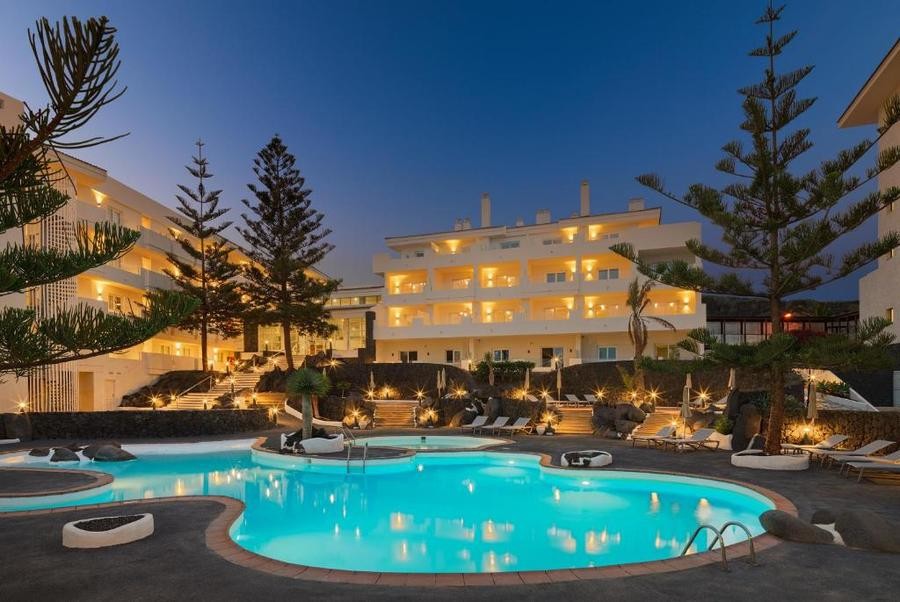
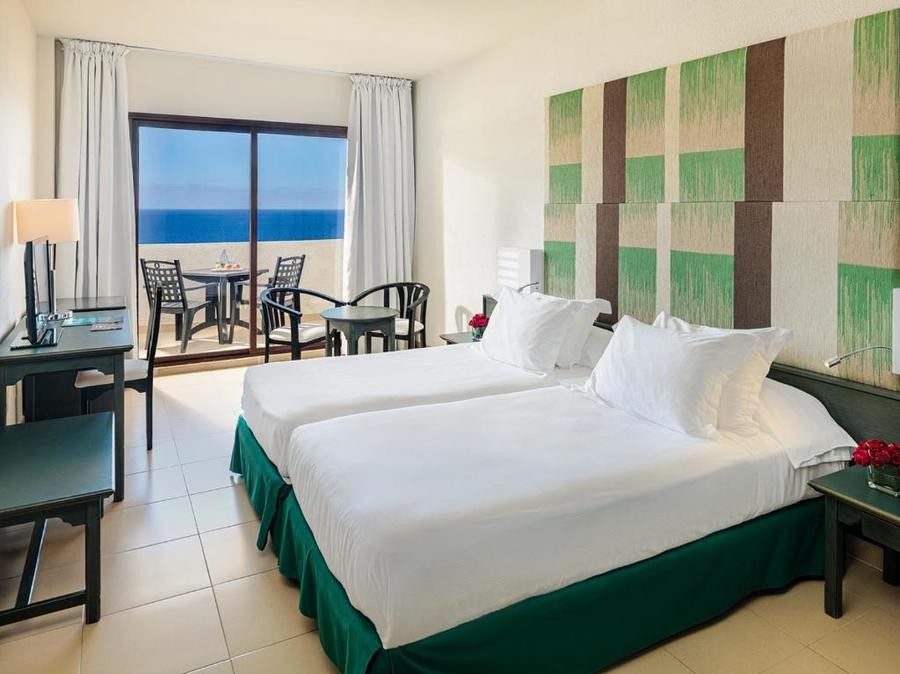
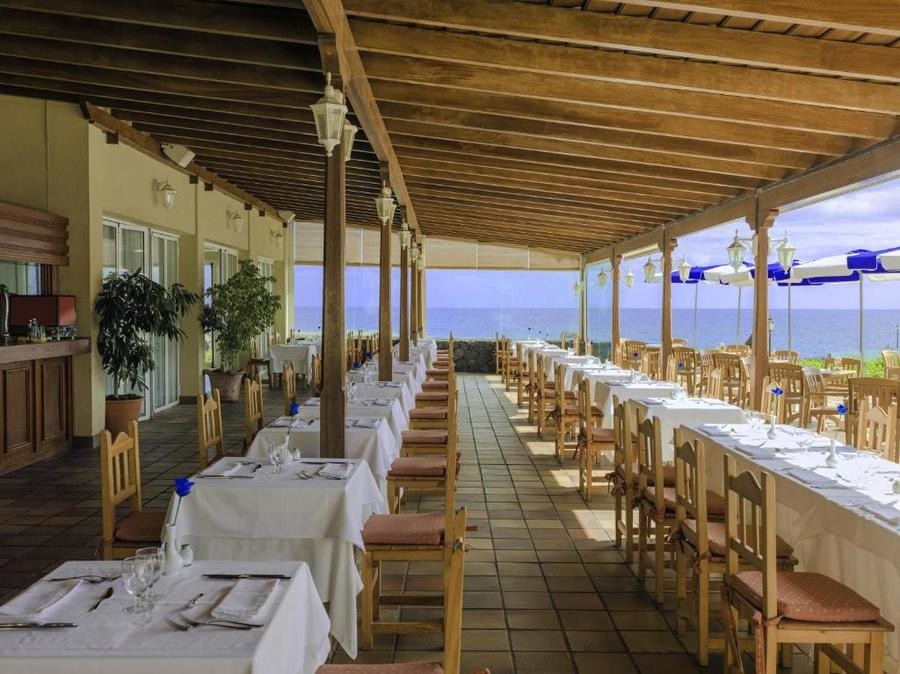
Transportation
All transportation and fuel are included during the tour. We’ll be travelling in a comfortable passenger bus, with a professional, local driver. The bus will give us plenty of space to travel comfortably with the luggage and camera backpacks, and having a professional driver will ensure we arrive at the locations on safely and on time.
Hiking
This is not a hiking photo tour, and most of the locations will be a short walk away from the parking lot. However, we’ll sometimes be walking on flat to moderately uphill paths to find the best compositions. These paths are mainly gravel and rocks. The only short hike we’ll do during this photo tour is to the top of Pico de la Cruz, which is a 15-minute walk uphill from the parking lot. We will also be driving multiple hours a day to get to and from locations.
For this reason, we recommend being in good physical shape in order to enjoy this tour to the fullest.
What expenses should you consider for this La Palma photo tour?
Flights
You should book your flight to/from Aeropuerto de la Palma (SPC).
The price of round-trip flights to La Palma from Europe is around $100-300 USD and flights from the US cost approximately $400-700 USD.
The main direct flights to La Palma are from Madrid and Barcelona with Iberia Express and Vueling airlines. These flights sometimes are not available until 6-7 months before the start of our tours.
You might also find direct flights to La Palma from European cities such as Frankfurt, Berlin, Düsseldorf, Stuttgart, Hamburg, Munich, Brussels, London, Zürich or Amsterdam, with companies such as Lufthansa, FlyEdelweiss, TUI, Cóndor, Easyjet and Eurowings.
Airline ticket prices will depend on the airport you are flying from. We recommend this article to help you find the best flights to La Palma Airport from your current location.
*If you don’t find flight options now, it might be because the local flights from Madrid & Barcelona are not available yet. We recommend waiting until 6 months before the tour to check and book these flights.
Meals
Meals are not included in the price of this tour except breakfasts in the hotel.
Every day, we’ll have a big meal at lunch or dinner in one of the local Spanish restaurants. Spanish food is delicious, and you’ll love the local dishes from the Canary Islands, so this will also be one of the highlights of this La Palma photo tour.
We recommend preparing to spend about $30-$40 USD on food per day.
What makes this La Palma Tour unique?
Our workshops are completely centered on photography: finding the best lighting conditions during the trip and creating an intensive experience that is conducive to learning and taking the best images.
Our workshops are limited to small groups with a ratio of no more than six students per instructor. This is also an important factor for providing the attentive instruction you need during the tour.
During this workshop, we will photograph the famous locations in this destination as well as some hidden gems that we have discovered while exploring in the past that are rarely visited or photographed.
We will discuss your goals before the tour so we can create a dedicated instruction plan for you. It doesn’t matter what your age is or your skills are; we will design your plan and provide you with materials before, during, and after the workshop so the learning process is not limited to just the tour.
We have spent years designing national and international photo tours with successful results, helping photographers with everything from the simple task of getting off Auto to the ambitious goal of capturing complex images.
Beyond the photography, our photography workshops help build strong bonds that last forever. After our trip, you’ll feel like you have been with a group of friends rather than on a standard tour. We are thankful to have plenty of repeat clients who keep traveling and learning with us.
Frequent asked questions about our La Palma astrophoto tour
What level of photography knowledge should I have to attend this La Palma workshop?
Whether you are experienced or just starting out in photography, you are welcome, and I am convinced that you will progress quickly. Together, we will send you home with a thorough knowledge of many photography areas from the basics to multiple advanced techniques.
What physical shape do I need to be in?
Most shooting locations in La Palma will require walking between 15-20 minutes from the parking lot, sometimes on uneven terrain like rocks or gravel, and at night when we shoot the Milky Way.
We’ll often scout the locations before nightfall so we can be well acquainted with them before it gets dark, so we recommend being in good physical shape to be able to enjoy this experience.
Am I too young/old for this La Palma Workshop?
There is no age limit. This trip is perfect for anyone over 18 years old who wants to photograph the Canary Islands landscapes with us.
Can my non-photographer companion join us on the tour?
Non-photographer companions are welcome to join the tour, and they need to book a spot under the same price and conditions as any other participant. (We don’t allow non-participant companions tagging along with the group). We have had plenty of non-photographer companions over the years and all of them enjoyed an amazing experience. As long as they enjoy nature, beautiful landscapes, and are a bit patient with the schedules of a photo tour, joining the trip can be a great experience regardless of the shooting.
Can I bring my drone?
Capture the Atlas is drone friendly. However, drones are not allowed in most of the locations we’ll visit. We do not recommend bringing a drone on this photo tour. However, if you decide to bring it, you’ll be flying your drone at your own risk. Prince is an experienced drone pilot and can help you with your drone photography.
Our Happy Students!
We have had the opportunity to work with and help countless photographers over the last years:


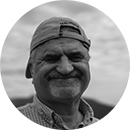

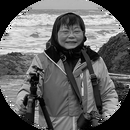
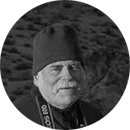
All astrophotographers in Europe and a big part of the world travel yearly to La Palma as part of their night photography pilgrimage to capture the beauty of the night skies.
There aren’t many places in the world where you can go from sea level to above the clouds in a relatively short drive, enjoying one of the most mesmerizing views on this planet when our galaxy rises above the clouds.
Pair this with stunning seascapes, endemic forests and flowers, and, of course, the yummy Spanish food, and you have the perfect recipe for a memorable trip!
Dan
You’ve probably seen Capture the Atlas in…






